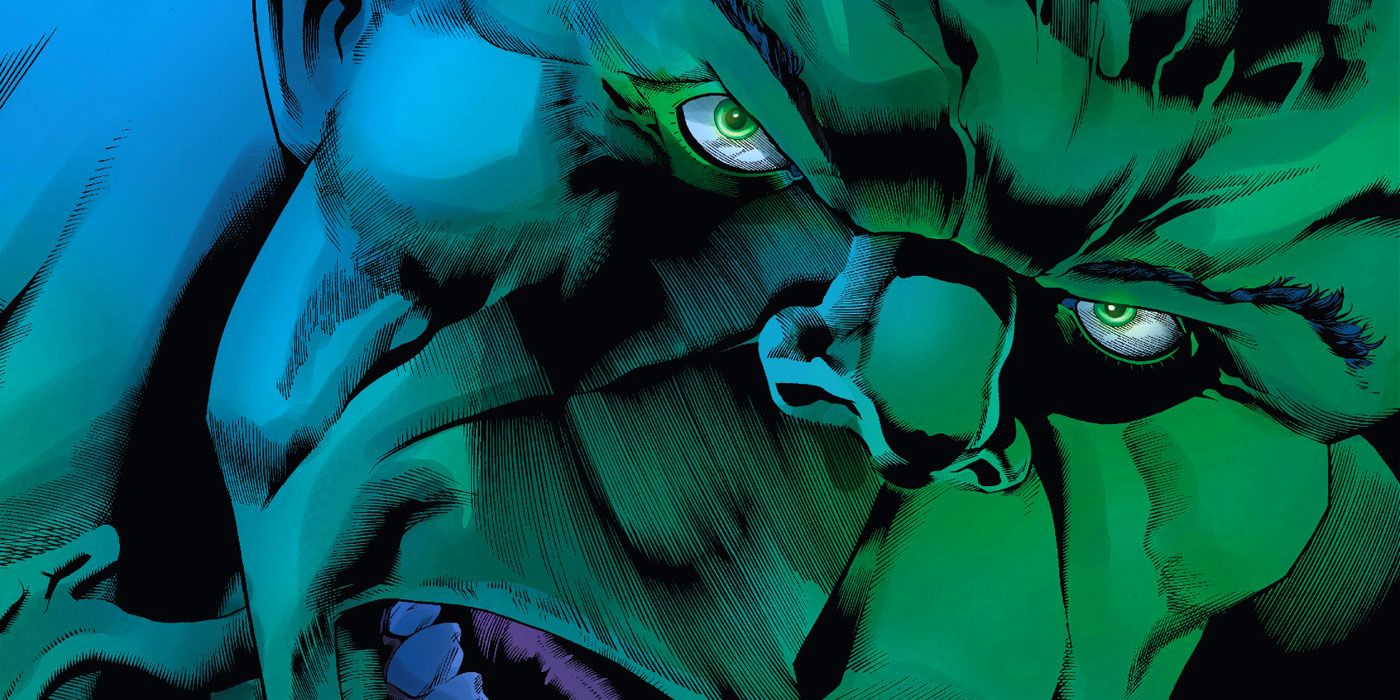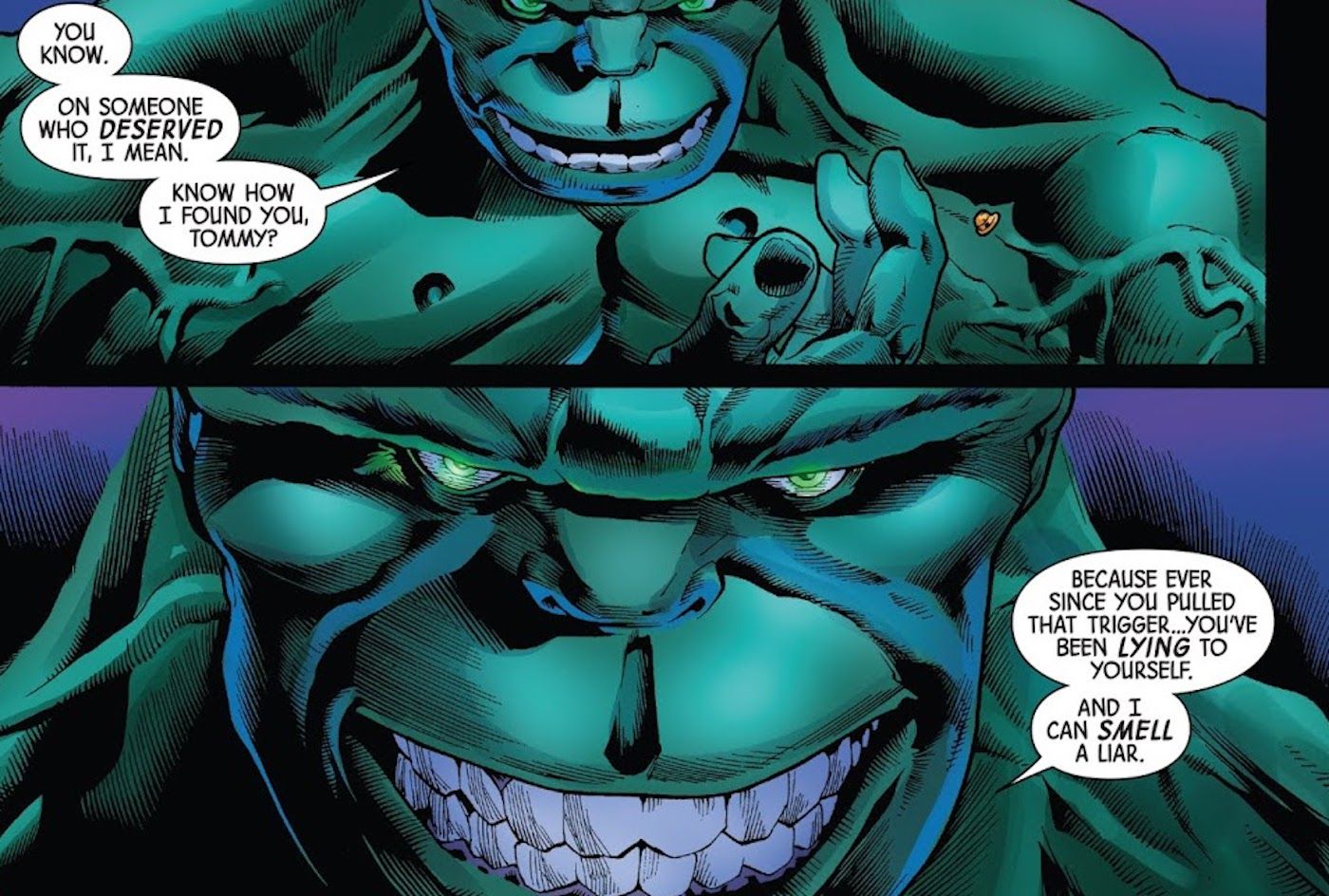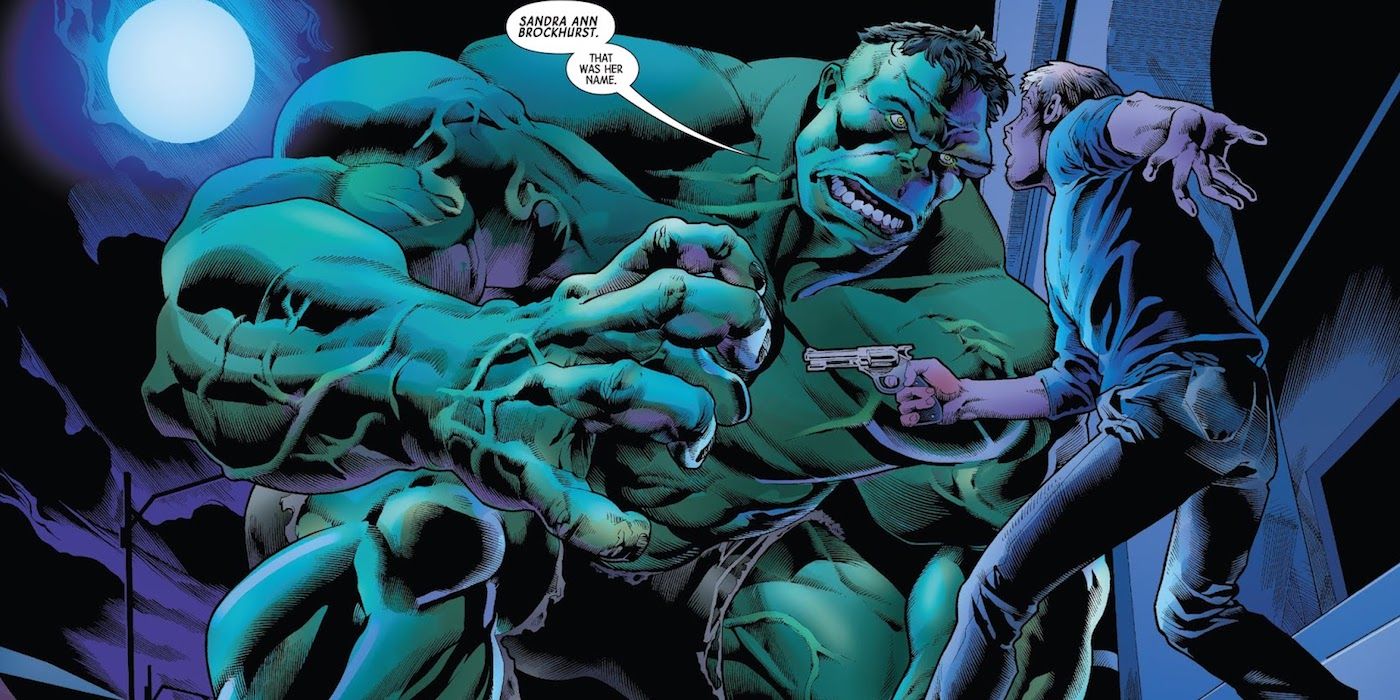Bruce Banner's inner-war has cost the Marvel Universe a lot. The Hulk's brought a lot of chaos to the table, resulting in him being marooned off planet via the Planet Hulk storyline, only to return with vengeance in World War Hulk. While he toes the line between hero and anti-hero, there are also stories, such as Secret Empire and No Surrender, which paint the Jade Giant in a scarier light; something fans thought they were rid of when Hawkeye apparently killed the gamma beast in Civil War II.
But no matter what, the Hulk just can't seem to stay dead.
The Immortal Hulk #1 plays off this concept, shaping him as an immortal boogeyman who doesn't have to rely on Banner in order to remain alive. However, amid the destruction he sadistically brings down on a small town in the middle of nowhere, longtime readers quickly realize this Hulk has a bit of familiarity to him. This updated take from Al Ewing and Joe Bennet is a monstrous yet much smarter version of the Hulk, eerily reminiscent of Banner's Joe Fixit persona.
RELATED: Immortal Hulk #1 Pays Tribute to the Past, But Moves the Character Forward
When he arrived on the scene in 1962's The Incredible Hulk #1 from Stan Lee and Jack Kirby, the Hulk was grey rather than green. Though canon, the hue of his skin was due to a coloring issue at Marvel, and he was green in the subsequent books. However, he turned grey again decades later in The Incredible Hulk #324. Here, Peter David would proceed to reshape the Hulk as Joe Fixit, a mob enforcer, but more importantly, a calculating and manipulative individual fully in control of his senses. He had almost as much power as the Savage Hulk (aka the Green Hulk), but as he grew angrier, he got bigger.
Ewing and Bennet have more or less creates a hybrid Hulk -- green like the Savage version, but with the methodical and intelligence of Joe Fixit. This is because the team wants to dive deep into the man vs. monster syndrome which psychoanalyst Carl Jung elaborated on. It's more than just your typical Jekyll and Hyde battle, or being Frankenstein's monster; Immortal Hulk wants to show us that Hulk doesn't need Banner, and no matter how much his human side tries, he can't get rid of the jade giant due to some higher calling -- again, themes Jung touched on in his philosophical work on religion.
RELATED: The Immortal Hulk Is Gonna Kill an Original Alpha Flight Member
In the new series' first few pages, Banner's killed with a bullet through the head at a botched gas station robbery, along with the cashier and a young girl named Sandy. At the morgue, though, Hulk rises from the dead and begins hunting the killer, a nervous young man named Thomas who made a mess of the heist. It turns out Thomas owed the local biker gang money, so when he meets with them, Hulk gets to kill two birds with one stone. When he emerges, he's as big as a truck, seemingly towering at eight feet or so, at least.
This Hulk has the same facial expression as Joe Fixit, as well as the warped body structure, but it's clearly a scary mixture of two Hulks. As he dispatches the gang, we see the raw power of the Savage Hulk, but when he confronts Thomas, he's taunting and sinister, just like Joe in his days of being an intimidating brawler. He teases Thomas about being a coward while reminding the powerless man that he's actually the monster in this equation. We all know Savage Hulk doesn't toy with people, he smashes them, which adds further evidence to the theory we're witnessing the wits and wiles of Joe Fixit in action.
This is compounded later on when we find out he didn't actually kill the gang, or Thomas, who was beaten within an inch of his life. He merely spared them thanks to his god complex, and to show Banner who's in control, a characteristic often found in Joe's own mode of operation. With Ewing's new Hulk boasting a cunning attitude, it remains to be seen if Banner can indeed outwit, or at least match the morally grey guiles of his alter ego. As it stands, the latter's winning and isn't intent on letting his human side pilot things anytime soon.



